A corner of Switzerland in the Australian countryside
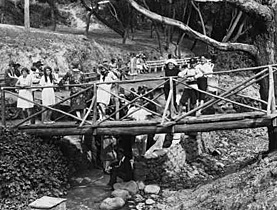
Swiss and Italian immigrants to Australia made their mark on Australian culture, as swissinfo.ch discovered during a recent visit.
“Their presence and contribution were the seeds that fostered the development of a multicultural society in the State of Victoria”.
This description of the impact of Swiss and Italian migrants on life in Australia – aired at an exhibition staged by Melbourne’s Museum of Immigration in 2007 – is maybe an exaggeration; the Italian-speaking community was just one of the many that grew up around the gold mines in the second half of the 19th century.
However, unlike other nationalities, the “Swiss Italians” – a term that lumps together immigrants from Ticino, the Poschiavo valley, Lombardy and Piedmont – left an indelible mark on Australian society, sometimes in unusual ways.
“They had a relatively strong impact,” confirms Joan Hunt, chair of the Ballarat Genealogical Society. “Though more discreet than the Chinese or Germans, who also came to this area to dig for gold, the Italian-speaking immigrants have left us a very special cultural heritage.”
“Magna aglios”
Swiss and Italian citizens of every social class and political persuasion worked in the goldfields around Jim Crow (now Hepburn Springs, a hundred or so kilometres north-west of Melbourne).
“Few of them got rich on gold. The Italian speakers were the first to realise that they could earn more from secondary activities, like supplying equipment and board and lodging to the miners,” explains Claire Gervasoni, an Australian historian.
Doctor Rosetti was the first to open a shop in Hepburn Springs, while the Lucini brothers, originally from Intra on Lake Maggiore, established the continent’s first pasta business, the Old Macaroni Factory (celebrating its 150th anniversary in 2009).
As well as producing “luganighe” sausages, butter, cheese, fruit and vegetables, and cultivating grape vines, the Swiss and Italian immigrants also made a name for themselves on the sport’s field. “The jerseys of the Hepburn Springs rugby club had red and blue stripes, the Ticino colours,” points out Claire Gervasoni.
“Rival teams referred to them as the “magna aglios” because of the Ticino immigrants’ habit of putting a lot of garlic in their sausages. They complained that the Italians did it deliberately, to subdue their opponents with their strong-smelling breath.”
Ticino-style roofs
Their most obvious impact, still in evidence, has been on architecture and local politics.
Their skills as stonemasons, rooted in the alpine traditions of Italian-speaking Switzerland and northern Italy, enabled the immigrants who stayed on in Australia, to build solid, durable houses.
The countryside around Hepburn Springs is dotted with stone-built farmhouses, cottages and walls erected more than a century ago. Over the years, some buildings have collapsed, but others – renovated and listed as being of historical interest – are still a magnet for architects and researchers.
“In the village of Yandoit, you can still see typical Ticino-style roofs and brickwork,” says Professor Robert Pascoe of Victoria University. “One cowshed even has the typical old ventilation system.”
Some immigrants or their descendants,” continues Pascoe – author of an article in Australian People”, the key work of reference on foreign communities in Australia, “played a significant role in civic life as members of local councils and voluntary bodies.”
Severino Guscetti
A prominent figure – to whom tourist operators owe a debt of gratitude – was Dr Severino Guscetti (a former deputy in the Swiss Parliament): in 1864, with the support of some of his fellow countrymen, he set up a committee to safeguard the mineral water springs. Now, 150 years later, the Hepburn Springs spa is one of Victoria’s principal tourist attractions.
Even so, the history of Swiss and Italian migration to the goldfields of Victoria was fraught with difficulties and failures: most of the settlers experienced discomfort and suffering.
“In general, they knew next to nothing about the local conditions,” says Pascoe.
“They often chose arid, unsuitable plots of land. Many had to resign themselves to the fact that it was impossible to launch a profitable cheese-making business.”
“And there was a lack of continuity in their cultural life: the community was too small and, as the years went by, many of them moved to Melbourne.”
Whatever people’s views and feelings, there is one aspect of this phenomenon that has undoubtedly marked Australian culture: the Italian language.
“In the 1850s,” points out Claire Gervasoni, “one-tenth of the population of Hepburn Springs spoke Italian.” Further boosted by immigration from Italy in the post-war period, Italian has gradually established itself as one of Australia’s most widely spoken languages, after English.
Luigi Jorio in Melbourne, swissinfo.ch

In compliance with the JTI standards
More: SWI swissinfo.ch certified by the Journalism Trust Initiative

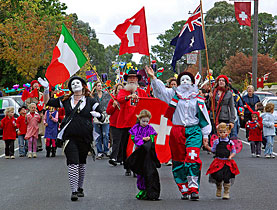
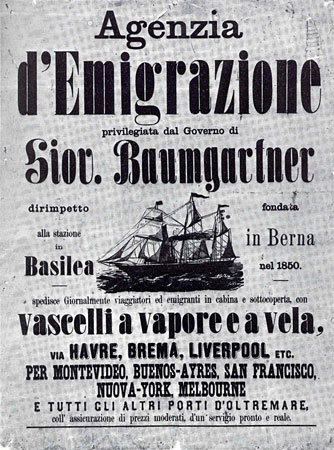

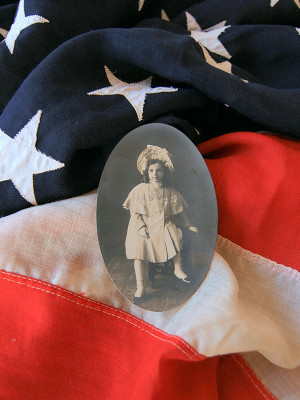
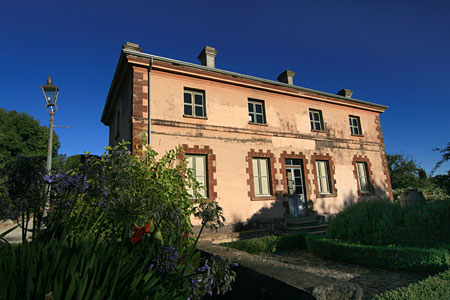
You can find an overview of ongoing debates with our journalists here. Please join us!
If you want to start a conversation about a topic raised in this article or want to report factual errors, email us at english@swissinfo.ch.